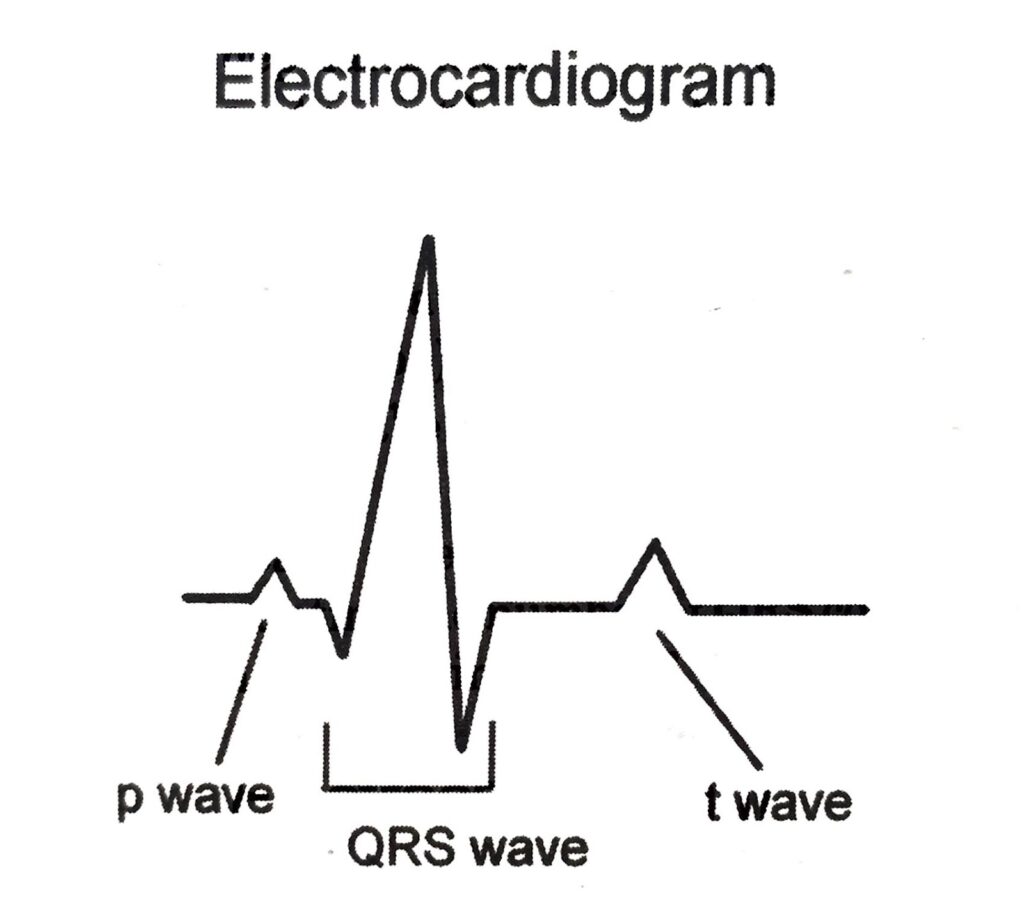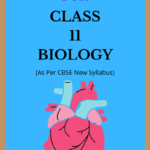NCERT Class 11 Biology Chapter 18 Body Fluids and Circulation Solutions to each chapter is provided in the list so that you can easily browse through different chapters NCERT Class 11 Biology Chapter 18 Body Fluids and Circulation and select need one. NCERT Class 11 Biology Chapter 18 Body Fluids and Circulation Question Answers Download PDF. NCERT Biology Class 11 Solutions.
NCERT Class 11 Biology Chapter 18 Body Fluids and Circulation
Also, you can read the NCERT book online in these sections Solutions by Expert Teachers as per Central Board of Secondary Education (CBSE) Book guidelines. CBSE Class 11 Biology Solutions are part of All Subject Solutions. Here we have given NCERT Class 11 Biology Chapter 18 Body Fluids and Circulation Notes, NCERT Class 11 Biology Textbook for All Chapters, You can practice these here.
Body Fluids and Circulation
Chapter: 18
BIOLOGY
TEXTUAL QUESTIONS ANSWERS
Q.1. Name the components of the formed elements in the blood and mention one major function of each of them.
Ans. Blood Corpuscles are of three types – RBC, WBC and platelets.
1. Erythrocytes [Red Blood Corpuscles / RBC] –
(i) Function of RBC – transport of O₂ and CO₂.
2. Leucocytes [White Blood Cells / WBC]–
Types of Leucocytes-
(A) Agranulocytes are of two types –
(i) Lymphocytes – They produce antibodies.
(ii) Lymphpcytes exists in two groups: B and T – lymphocytes
(iii) Monocytes – They are phagocytic in nature.
(b) Granulcytes are of three types–
(i) Eosinophils – Their number increases in people with allergic conditions. They play a role in immune system.
(ii) Basophils basophils liberate histamine, heparin and serotonin.
(iii) Neutrophils – They are phagocytic in nature.
3. Platelets [Thrombocytes]-
(i) Platelets release platelet factors like thromboplastin which help in clotting of blood.
Q.2. What is the importance of plasma proteins?
Ans. Plasma is pale yellow clear fluid forming 55% of blood.
Composition of Plasma is-
(i) Water forms 90% of the plasma.
(ii) Minerals: Na, Ca, Mg, HCO₃, Cl
(iii) Plasma Proteins Albumin for osmotic balance, globulin for defence mechanism, prothrombin and fibrinogen for blood clotting.
Q.3. Match column I with column II:
| Column I | Column II |
| (a) Eosinophils | (i) Coagulation |
| (b) RBC | (ii) Universal Recipient |
| (c) AB Group | (iii) Resist Infections |
| (d) Platelets | (iv) Contraction of Heart |
| (e) Systole | (v) Gas transport |
Ans.
| Column I | Column II |
| (a) Eosinophils | (iii) Resist Infections |
| (b) RBC | (v) Gas transport |
| (c) AB Group | (ii) Universal Recipient |
| (d) Platelets | (i) Coagulation |
| (e) Systole | (iv) Contraction of Heart |
Q.4. Why do we consider blood as a connective tissue?
Ans. Blood is considered as connective tissue because blood transports materials from one organ to another and connects all body organs.
Q.5. What is the difference between lymph and blood?
Ans. Lymph is derived from blood present in space between the cells in tissues. Composition is similar to blood except fewer proteins. It has WBC but no RBC and platelets.
Q.6. What is meant by double circulation? What is its significance?
Ans. DOUBLE CIRCULATION-
(i) It is seen in crocodiles, birds and mammals.
(ii) It includes systemic and Pulmonary Circulation.
(iii) Systemic Circulation – The flow of oxygenated blood from left ventricle to all parts of the body and deoxygenated blood from various body parts to right atrium is called Systemic Circulation.
(iv) Pulmonary Circulation – The flow of deoxygenated blood from right ventricle to fungs and the return of oxygenated blood from lungs to left atrium is called the Pulmonary Circulation.
(v) Significance of Double Circulation-
(a) It checks the mixing of oxygenated and deoxygenated blood.
(b) Oxygenated blood carries more oxygen.
(c) Deoxygenated blood carries more carbon dioxide for removal.
Q.7. Write the differences between:
(a) Blood and Lymph.
Ans. Blood and Lymph
Lymph is derived from blood present in space between the cells in tissues.
Composition is similar to blood except fewer proteins. It has WBC but no RBC and platelets.
(b) Open and Closed system of circulation.
Ans. Open circulatory system-
(i) Blood pumped by heart passes through vessels into open spaces or body cavities/sinuses.
(ii) It is present in Arthropods and Molluscs.
Closed circulatory system-
(i) Blood pumped by heart passes through vessels into closed network of blood vessels.
(ii) It is present in Annelids and Chordates.
(c) Systole and Diastole.
Ans. Systole and diastole
(a) Ventricular Systole:
(i) Ventricles begin to contract due to stimulation by the AV node.
(ii) Ventricles complete their contraction and semilunar valves open.
(iii) Blood flows into the pulmonary trunk and aorta.
(b) Ventricular diastole-
(i) Ventricles relax.
(ii) Ventricular pressure falls and semilunar valves are closed.
(iii) The tricuspid and bicuspid valves open when pressure in the ventricles falls and is less than in atria.
(iv) Blood flows from atria to ventricles.
(d) P-wave and T-wave.
Ans. P-wave and T-wave-
(i) The P wave is atrial depolarization or atrial contraction.
(ii) T wave represents ventricular repolarization (ventricular relaxation).
Q.8. Describe the evolutionary change in the pattern of heart among the vertebrates.
Ans. Two chambered heart and single circulation [in fishes] – three chambered heart and incomplete double circulation [ in amphibians & reptiles] – four chambered heart and double circulation [in birds and mammals].
Q.9. Why do we call our heart myogenic?
Ans. The mammalian heart is myogenic because heart beat originates from a muscle.
Q.10. Sino-atrial node is called the pacemaker of our heart. Why?
Ans. PACE MAKER OF HEART: is SA Node. The heart beat originates from the sinoatrial node [SA Node] in the wall of right atrium.
Q.11. What is the significance of atrio-ventricular node and atrio-ventricular bundle in the functioning of heart?
Ans. Conduction of heart beat: SA node conveys impulse of contraction to — AV node [Atrio ventricular node] situated in the wall of the right atrium – Bundle of His – Purkinje fibres – myocardium of ventricles.
Q.12. Define a cardiac cycle and the cardiac output.
Ans. Cardiac cycle is defined as sequential events in the heart which are repeated cyclically. It consists of atrial systole, ventricular systole, and complete cardiac diastole.
Cardiac output is defined as volume of blood pumped out by each ventricle per minute. Cardiac output = stroke volume x heart rate = 5 liters.
Q.13. Explain heart sounds.
Ans. First heart sound or lubb is caused by closure of bicuspid and tricuspid valves.
Second heart sound or dub is caused by closure of semilunar valves.
Q.14. Draw a standard ECG and explain the different segments in it.
Ans. ECG
(i) ECG is graphic record of electric current produced by the excitation of cardiac muscles.
(ii) Normal electro gram is composed of a P wave, a QRS wave (complex) and a T wave.
(iii) The P wave is atrial depolarization or atrial contraction.
(iv) The QRS wave represents ventricular depolarization (ventricular contraction) and beginning of systole.
(v) T wave represents ventricular repolarization (ventricular relaxation).
(vi) End of the T wave marks the end of systole.
(vii) Heart rate can be determined by counting the number of QRS complex in a given time period.


Hi! my Name is Parimal Roy. I have completed my Bachelor’s degree in Philosophy (B.A.) from Silapathar General College. Currently, I am working as an HR Manager at Dev Library. It is a website that provides study materials for students from Class 3 to 12, including SCERT and NCERT notes. It also offers resources for BA, B.Com, B.Sc, and Computer Science, along with postgraduate notes. Besides study materials, the website has novels, eBooks, health and finance articles, biographies, quotes, and more.


